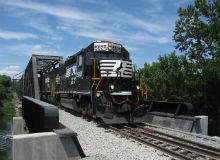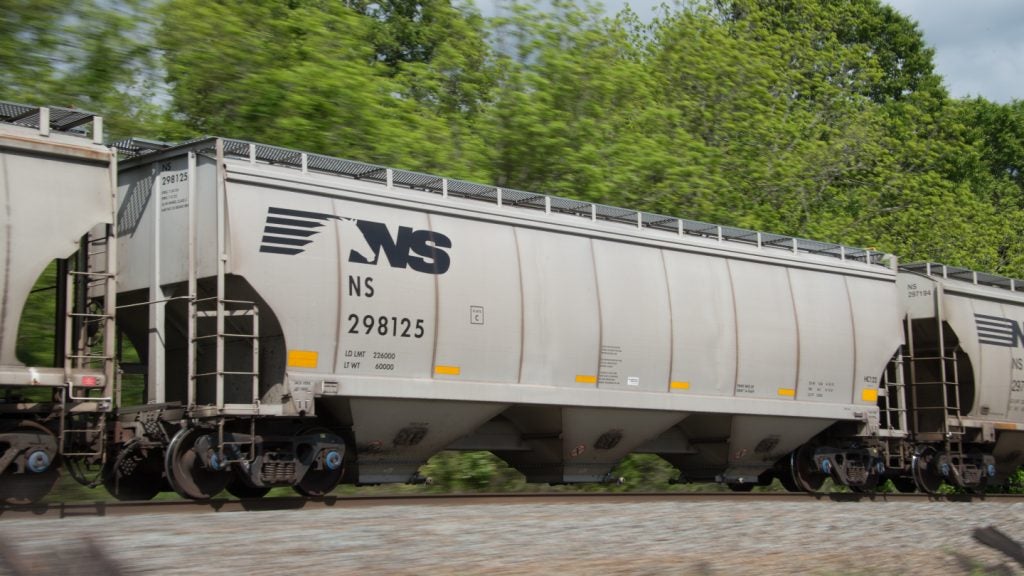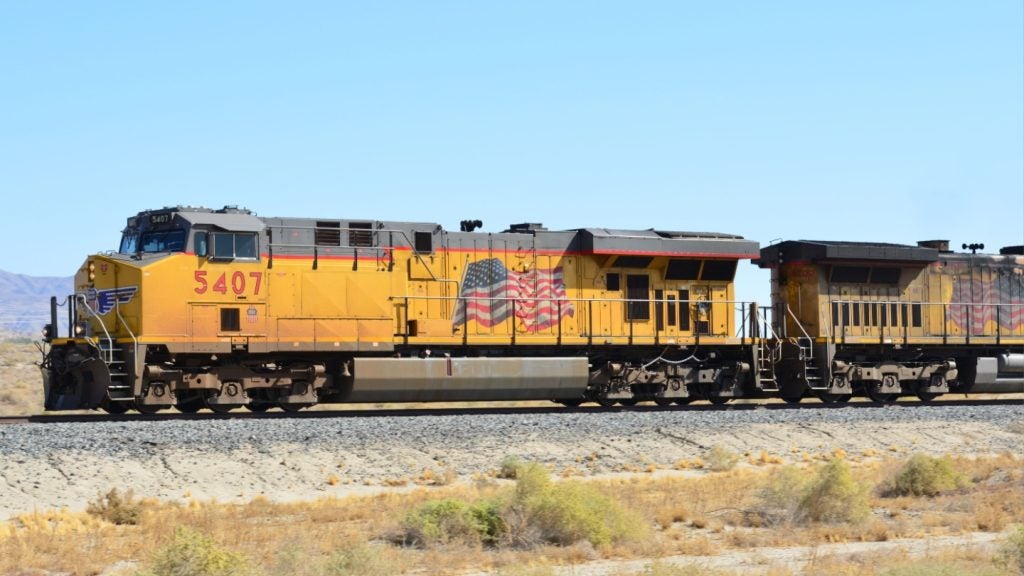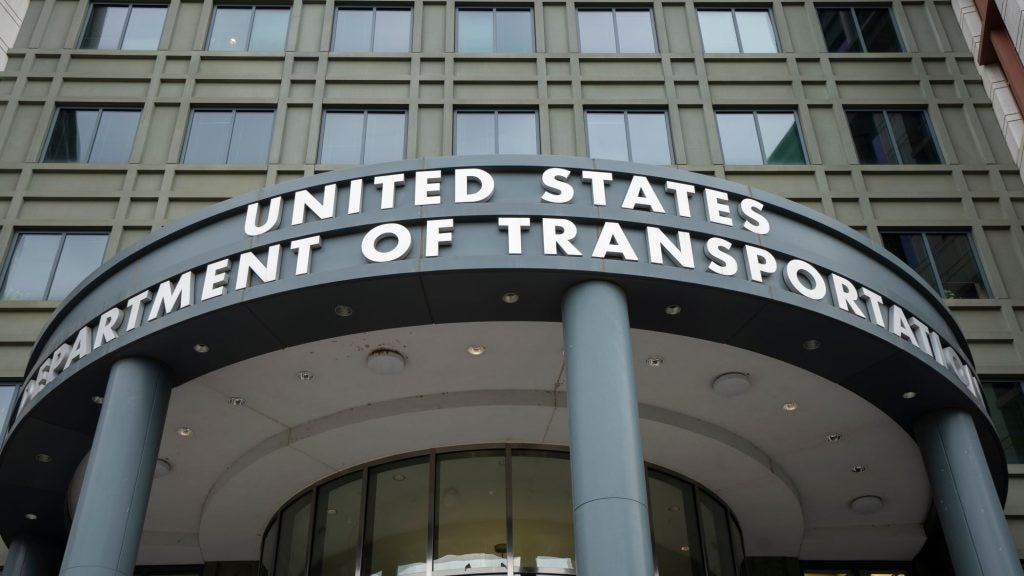
Norfolk Southern train” class=”fullwidth” src=”https://www.railway-technology.com/wp-content/uploads/image-digitalinsightresearch/Archive/nri/railway/Norfolk-Southern.jpg” />
In 2008, the Rail Safety Improvement Act, passed by Congress, put into practice a series of provisions. One of these was to have positive train control (PTC) systems installed on passenger railroads and Class 1 freight railroads on main lines used to transport passengers or toxic-by-inhalation (TIH) materials, by December 2015.
The mandate for PTC followed the Chatsworth train collision, in which a freight and commuter train collided, killing 25 people. In May, an Amtrak train derailed, again with significant casualties.
But now, with the scale of work apparent, the decision has been made to extend the deadline by three years.
Ed Greenberg, a spokesperson for the Association of American Railroads (AAR), says the industry had been telling Congress "for years that the original deadline was simply impossible to meet", and adds that it was "arbitrarily set and unfortunately in 2008, lacked the appreciation of how complex and challenging the mandated-PTC system was going to be".
See Also:
This change in safety operations is vast; the AAR says it represents an "unprecedented technological challenge, on a scale that has never been attempted anywhere in the world". From a freight railroad perspective, it includes geo-mapping of more than 82,000 track-miles, as well as installing PTC technology on more than 22,000 locomotives.
How well do you really know your competitors?
Access the most comprehensive Company Profiles on the market, powered by GlobalData. Save hours of research. Gain competitive edge.

Thank you!
Your download email will arrive shortly
Not ready to buy yet? Download a free sample
We are confident about the unique quality of our Company Profiles. However, we want you to make the most beneficial decision for your business, so we offer a free sample that you can download by submitting the below form
By GlobalData"It is not off-the-shelf technology," says Greenberg. "It has had to be developed from scratch."
A welcome extension
The new legislation also allows the transportation secretary to put in place further extensions of up to two years for individual railways on a case-by-case basis.
When announcing the extension, Congresswoman Elizabeth Esty said: "Railroads are not ready to meet the deadline. And we can spend a lot of time blaming each other about why that is true, but my interest is in trying to get them on track as soon as possible."
Greenberg says: "Congress is to be commended for appreciating that more time was needed for the industry to fully develop, install, test and validate PTC, so it is fully operational across the US. Safety is built into every aspect of the rail industry and is a 24/7 focus."
This welcoming of the extension shouldn’t be taken as a lack of action from the railroads, however.
Niren Choudhury, director of transportation, Americas at Alcatel-Lucent, says it is clear that there is full backing for PTC implementation from across the industry. "Everybody thinks that it should be done, because it’s a matter of life. Everybody wants to save lives," he says.
Such commitment has seen around $6bn spent on PTC installation so far. When fully implemented in all its forms, this is expected to reach £10bn.
Safety is top priority
When looking at the complexities of PTC, it is clear that this huge financial backing is fundamental.
As a whole, PTC refers to technologies that are designed to automatically stop trains. A fully fledged PTC system will determine the location, direction and speed of trains, warn train operators of potential problems, and take action if the operator does not respond to the warning provided.
Federal accident investigators have stated that the technology could have prevented the Amtrak incident. Amtrak does have PTC in operation on its Northeast corridor, but not along the section of track where the train derailed.
"There will be one standardised system that is interoperable on both freight and passenger railroads," explains Greenberg.
"PTC technology that will be installed are overlay systems, meaning they will supplement existing train systems and safety protocols and technology already in place."
Despite its supplementary nature, PTC is no doubt a revolutionary jump forward. The system will have to analyse and incorporate a number of factors, such as speed, terrain, weight and length, and the number of locomotives, as well as upgrades to signaling and the implementation of wayside interface units, which will transmit information to locomotives and train dispatching offices from signal and switch locations along the right-of-way.
Edward R Hamberger, president and chief executive of the AAR, has written about this, stating back in 2013: "To make PTC work, freight railroads will use advanced signalling systems that require the installation of about 22,000 antennas, which requires Federal Communications Commission approval."
Track by track, step by step
How much of this mammoth task has been completed? Figures from the AAR show that, as of mid-2015, 14,300 locomotives were at least partially equipped with PTC; 22,000 will require it, while 19,000 wayside interface units had been deployed.
The Federal Railroad Administration states that Class 1 railroads have completed the majority of track mapping and completed – in some cases partially – PTC installation on more than half of the locomotives that will need it.
At the time of writing, Union Pacific has the necessary PTC hardware on 70% of its 6,500 locomotives, a process it expects to complete by next year, and hardware and software on 67% of its 20,000 miles of track. Metrolink has also begun PTC testing on its San Bernardino Line.
These statistics, along with the American Public Transportation Association’s projection that only 29% of commuter railroads could feasibly complete PTC installation by the end of the year – full implementation is in fact expected in 2020 – underscore the necessity of the deadline.
Choudhury, who says that it’s possible there will be "some spill over to 2019 of a few months", is working with Norfolk Southern, which has a 34,600km network, to upgrade its communication platform to IP/MPLS to give PTC the best chance of success.
"IP/MPLS is ideally suited to support PTC because it offers a single converged infrastructure with high network availability and resiliency … [including] through native security services such as non-stop routing," says Choudhury.
This single infrastructure is deemed vitally important, as new radio systems designed for data transmission requirements are key parts of the PTC deployment.
And, while the intentions behind PTC and the commitment behind it are not in doubt, there’s certainly a sense of relief that time is now on the industry’s side.
"Much remains to be done before the system is fully installed, tested and operational across the country," says Greenberg. "[But] the rail industry will continue going all out to ensure PTC is fully developed, installed, tested and validated, so that when this complex technology is turned on across the country it works and enhances safety."
Ultimately, that is the conclusion to which everyone is now striving towards.







